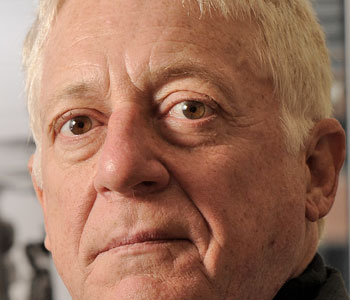Larry Wolff
The Idea of Galicia: History and Fantasy in Habsburg Political Culture
Stanford University Press
504 pages, 9 x 6 inches
ISBN 978 0804762670
This is a book about a geopolitical space—Galicia—that existed for a very precisely limited historical epoch.
Galicia was created—I would say “invented”—in 1772 at the time of the partitions of Poland, and then abolished at the end of World War I in 1918, disappearing forever from the official map of Europe. (An historical memory or phantom in the 20th century and still today, the former Galicia occupies southern Poland and western Ukraine, roughly the region between Cracow and Lviv, which were its two principal cities.)
So the book is a study of how an invented, artificial space became real, authentic, historical, and meaningful for the people who lived there (Poles, Ukrainians, Jews) and for the people who governed it (the Habsburg dynasty in Vienna and their administration in Galicia)—and then how the abolition of Galicia brought this province of the Habsburg monarchy back into the realm of the unreal.
The book is an experiment in writing the history of a place as an idea—or rather the multiple and various ideas that gave meaning and identity to Galicia during its historical existence, and then preserved its memory afterwards.
At the same time I argue that the idea of Galicia was important for imperial reasons. It was part of an imperial ideology that justified and explained Viennese rule over this province, and ordered the relation between the province and the ruling metropolis Vienna.
In particular, I’m interested in how an ideology of civilization enabled the Viennese government to envision a program of reform and development (even messianic transformation) in Galicia, and how this was related to a presumed “Western” metropolitan superiority to an “Eastern” province of the Habsburg monarchy.
The idea of Galicia was shaped by Europe’s mental mapping of the supposed difference between Western Europe and Eastern Europe. Galicia was mapped as backward, exotic, alien, and eastern from a Viennese perspective, and the Galicians themselves wrestled with these imposed categories as they sought to come to terms with their own provincial identity.
Finally, I argue that the provincial identity of Galicians as Galicians was important and meaningful to them—and not simply a secondary aspect of their religious or national identities as Poles, Ukrainians, and Jews.

'Eastern Europe' was in fact invented, along with 'Western Europe'—but since it was invented in the West, it was Western Europe that appropriated for itself the identity of the civilized half of the continent while Eastern Europe was characterized by relative backwardness.
The theories and approaches of The Idea of Galicia are closely related to earlier work that I have done on Eastern Europe more generally.
In 1994 I published a book called Inventing Eastern Europe, which argued that the geopolitical difference between Eastern Europe and Western Europe (which was taken totally for granted during the era of the Cold War, up until 1989) was in fact an artificial, culturally imposed distinction, created by the philosophers and travelers of the Enlightenment in the eighteenth century.
I argued that “Eastern Europe” was in fact invented, along with “Western Europe”—but since it was invented in the West, it was Western Europe that appropriated for itself the identity of the civilized half of the continent while Eastern Europe was characterized by relative backwardness. (The concepts of backwardness and development were also created precisely at this time and partly for this purpose.)
I argue that this invention was a work of “mental mapping” (as opposed to scientific geographical mapping) and that it was at the same time a work of “demi-Orientalism” (as opposed to the full Orientalism that was discussed by Edward Said as the Western characterization of the absolute “otherness” of Asia and the Middle East).
These cultural processes of invention, mental mapping, and demi-Orientalism in Eastern Europe are extremely important for my approach to Galicia. I argue that Galicia was an invented space, created by the Habsburgs who needed a name for the territory that they annexed from Poland in 1772, that Galicia was mentally mapped (as the Habsburgs explored and reformed the province, “discovering” its backwardness), and that Galicia was demi-Orientalized as being both eastern and exotic on the one hand, but still redeemably European on the other, that is, Eastern European.
A famous German-language series of fictional stories about Galicia, published in the nineteenth century by the Galician writer Karl Emil Franzos, was entitled Halb-Asien (“half-Asia”)—a neat and unusual summation of the supposedly demi-Oriental character of Galicia.
I make use of a lot of literary sources—which offer some of the “fantasy” aspects suggested in the subtitle—as I am interested in the way that fantasy and history interact to produce an idea of Galicia. The general issues of my book are thus connected to broader theories about mental mapping, the ideology of empire, Orientalism and demi-Orientalism, and the relation between Eastern Europe and Western Europe.
While The Idea of Galicia is closely related to my own earlier research and publications, it is also a subject that I came to for reasons of family history. My father’s parents were born in Galicia, as subjects of the Habsburg Emperor Franz Joseph. Although they lived most of their lives in the United States, they nevertheless maintained a sense of identity as Galicians.
Millions of Americans (in the United States and Canada) today are the descendants of Polish, Ukrainian, and Jewish emigrants from Galicia, and one of the ways in which Galicia has survived its own geopolitical existence is in the family memories and histories of what could be called a Galician diaspora.
Among Jewish Galicians this sense of identity with the province was particularly powerful—Jewish ethnography still uses the identity category of “Galitzianer” to represent a particular form of Jewish culture, customs, cooking, religious temperament, political background, and Yiddish pronunciation.
One of the general problems that the book addresses in its final chapters is how to measure and register the “afterlife” of a geopolitical space that has been abolished from the map. Emigration and diaspora offer one approach, but it is also possible, in both Poland and Ukraine, to find traces of Galician identity and agenda within contemporary politics.
Especially in western Ukraine the memory of Galicia reinforces a powerful sense of European identity. Some Ukrainians in Lviv in 2000 celebrated the 170th birthday of Habsburg Emperor Franz Joseph! The celebration was a reminder that Lviv, the provincial capital of Galicia, had been imperially related to Vienna long before it was bound to Moscow after World War II.
So one of the general problems that I study in my book is that of historical pentimento: the map of nineteenth-century Galicia hidden behind the contemporary map of post-communist Poland and post-Soviet Ukraine.
A fascinating cast of characters populate the pages of the book—individuals who contributed to shaping the idea of Galicia over the course of two centuries.
I write about Habsburg emperors like Joseph II, who sought to bring about a messianic transformation of Galicia in the 1780s, and undertook, for instance, the reform and recasting of its Jewish population—who received last names from the emperor. Or like Franz Joseph, who, ruling for almost 70 years (from 1848 to 1916), became a semi-mythological figure in his own lifetime, and was then fully mythologized in literature and fantasy after his death.
I hope my readers will notice the Galician experiences and perspectives of Mozart’s son, Franz Xaver Wolfgang Mozart, who decided that he would rather pursue his musical career as a composer in Galicia instead of in Vienna under the shadow of his father’s legendary genius.
No less intriguing are such Galician writers as Leopold von Sacher-Masoch, who wrote the notorious novella Venus in Furs about Galicia, and later left his name to the sexual temperament of masochism. Or Karl Emil Franzos, the author of Halb-Asien, who fictionalized the world of the Galician Jews. Or the greatest comic dramatist of Polish literature, Alexander Fredro, who built his comedies upon the tensions and contradictions of Galician life. Or the great Ukrainian writer. Ivan Franko, who wrote about the Galician oil fields in his novella Boa Constrictor.
There were also great 20th-century Galician writers who wrote about Galicia after the province ceased to exist. Joseph Roth, Bruno Schulz, and Shmuel Yosef Agnon, all born in Galicia, survived the abolition of their native province and later became great writers in the German, Polish, and Hebrew languages respectively, thus illustrating the cultural complexity of Galicia.
One random thing I’d like my readers to notice is the brief discussion of Billy Wilder, the great Hollywood genius of cinema, who was actually born in Galicia.

The map of Europe, as we see it at any given moment, represents the contingent reshuffling of many different forms that have appeared and disappeared over centuries.
I hope readers will take away a sense of the “evolutionary” history of geopolitical forms.
In the course of history, a province like Galicia can suddenly be created, evolve for more than a century, accumulate meanings and associations on the map of Europe, then lapse into extinction—and yet not be altogether forgotten, still playing a phantom role in the historical developments that follow.
In Eastern Europe we have seen radical changes on the map since the end of the Cold War, the disintegration of some countries, the emergence of others, a division and subdivision of former geopolitical spaces. All this serves as a reminder that the map of Europe, as we see it at any given moment, represents the contingent reshuffling of many different forms that have appeared and disappeared over centuries.
Mapping is intellectual and cultural work, and every geopolitical space may also be represented by ideas and identities, which may survive in consciousness and memory even after the space itself vanishes from the map. I hope that this book will unsettle and reshape readers’ sense of the Habsburg Empire, what it signified when it existed, and how— in fantasy and history—it continues to haunt and complicate the countries that have replaced it on the map.
I hope readers will take away a particular sense of how powerful is the role of fantasy (as, for instance, in the fictions of Sacher-Masoch) for shaping especially perspectives on Eastern Europe.
Finally, I hope that Americans whose families emigrated from Galicia more than a hundred years ago will take away from the book a sense of the complexity of the province that no longer exists, but that powerfully shaped the affiliations and identities of their grandfathers and grandmothers.




We don't put paywalls. We don't distract you with ads. We don't sell your data.
Please help to keep this running!